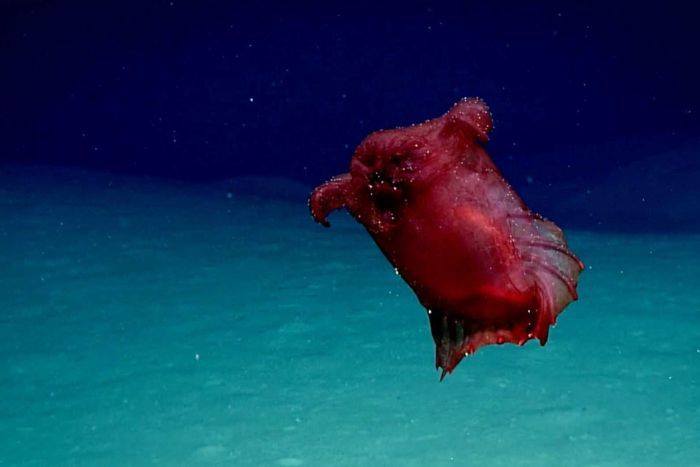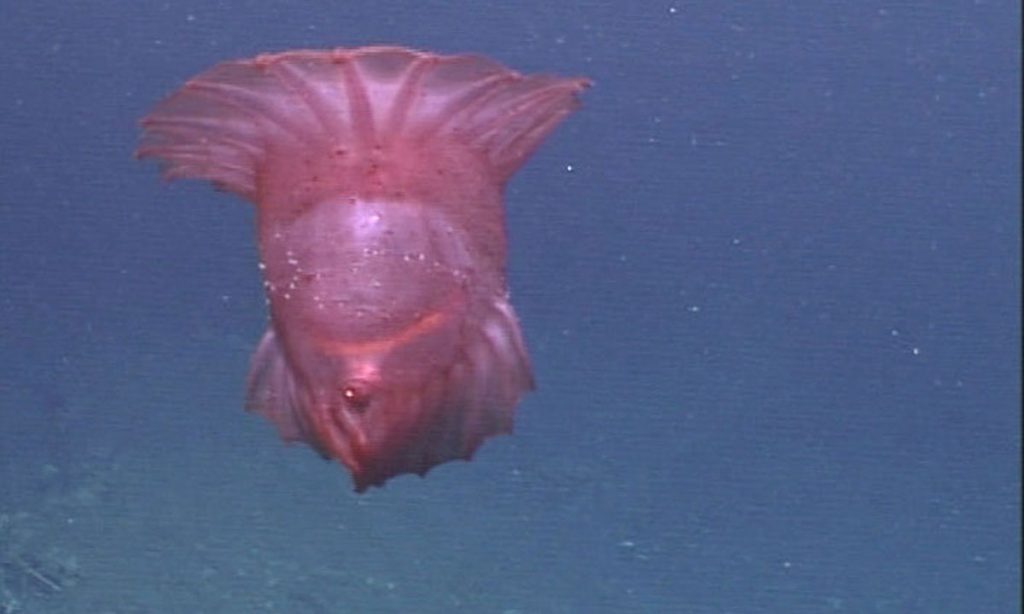
Australian researchers recently filmed an unusual sea creature that has been described as a “headless chicken monster” in the Southern Ocean off the coast of Antarctica.
Translucent and sporting fins that allowed it to swim upwards, the animal initially stumped the scientists, who described its appearance as “a chicken just before you put it in the oven.” The unusual creature, as it turned out, was a previously identified deep-sea sea cucumber that filters organic matter on the ocean floor.
Its Latin name is Enypniastes eximia, but we still prefer “headless chicken monster.” The creature is also known as the swimming sea cucumber and the Spanish dancer.

Video of the animal, which has never been filmed before in this region, was captured, thanks to a special underwater camera developed for commercial long-line fishing by the Australian Antarctic Division. The researchers, who set out to determine the effects of commercial fishing on two species of toothfish, gathered the footage by attaching cameras to fishing lines and dropping them nearly two miles into the big blue.
“Some of the footage we are getting back from the cameras is breathtaking, including species we have never seen in this part of the world,” said Australian Antarctic Division Program Leader Dr. Dirk Welsford in a statement. “Most importantly, the cameras are providing important information about areas of seafloor that can withstand this type of fishing and sensitive areas that should be avoided.”
This is only the second time that the species has been captured on film; last year it was recorded in the Gulf of Mexico. Dr. Welsford is hopeful that he and other teams can continue to use this low-cost recording technology to explore life on the seafloor for research and conservation purposes.
Video:




